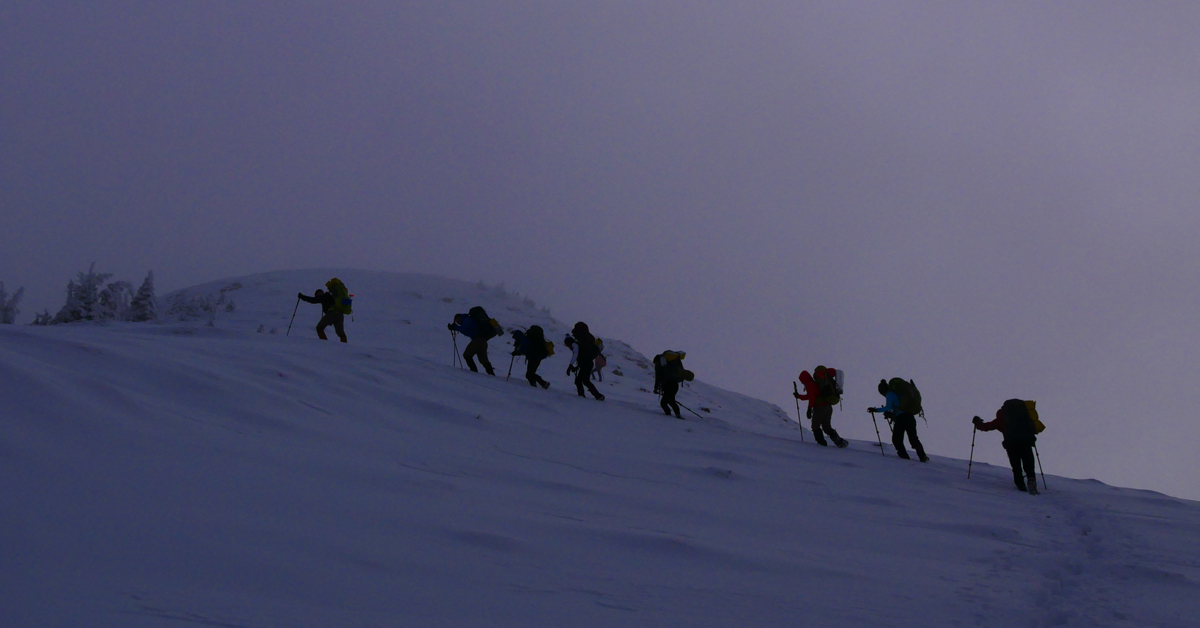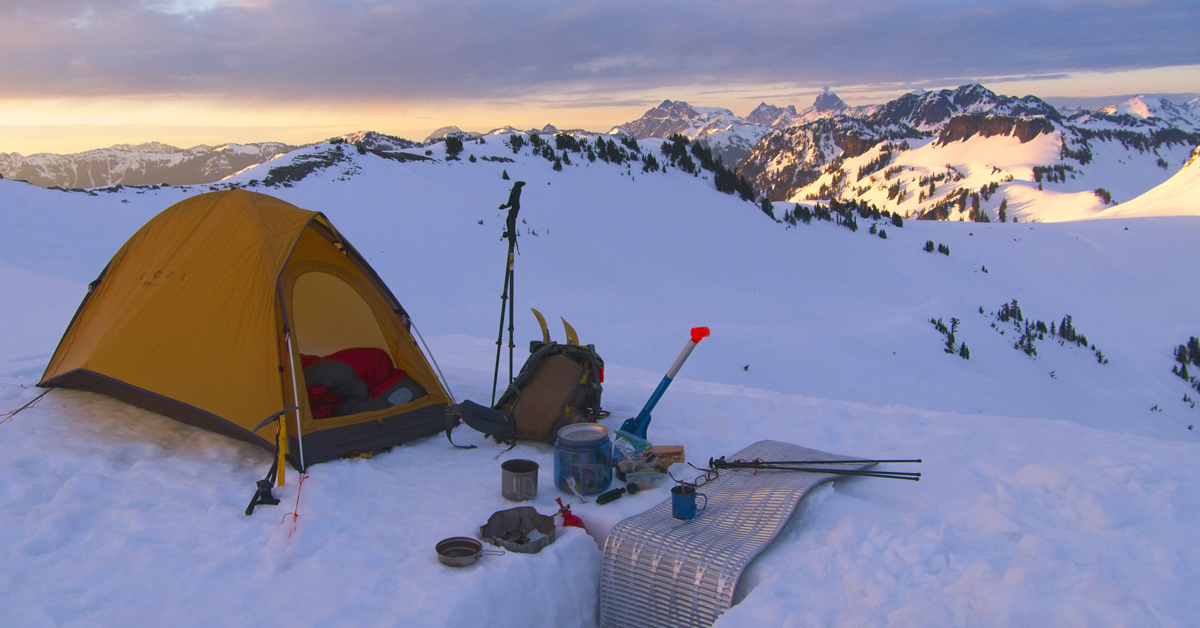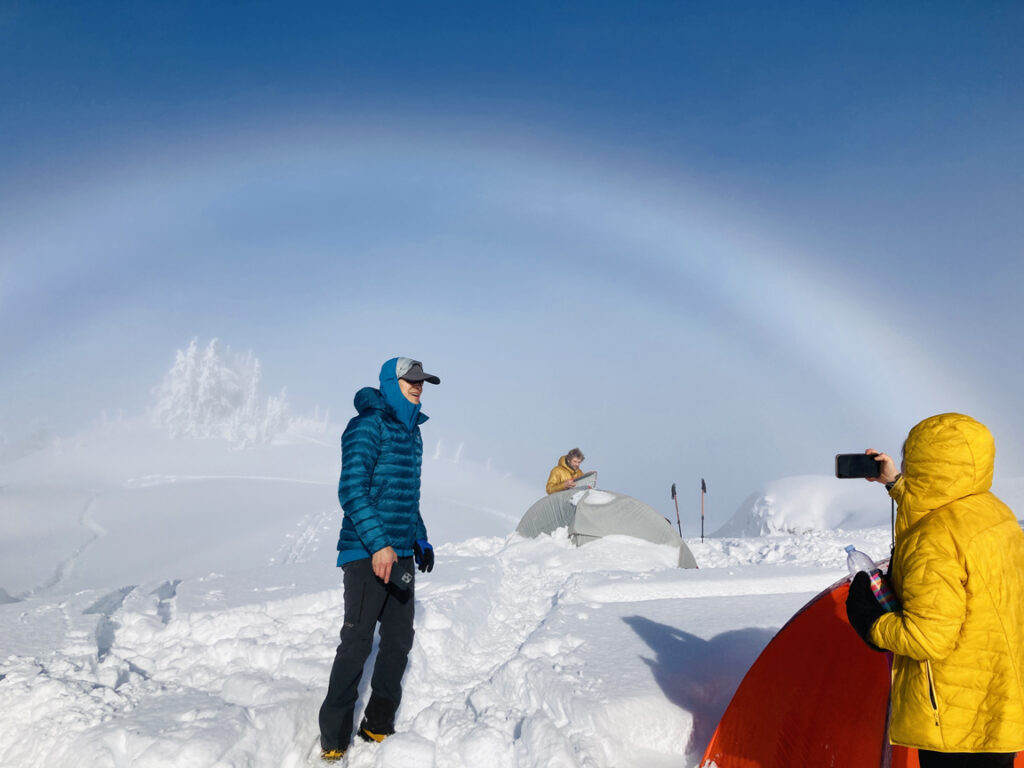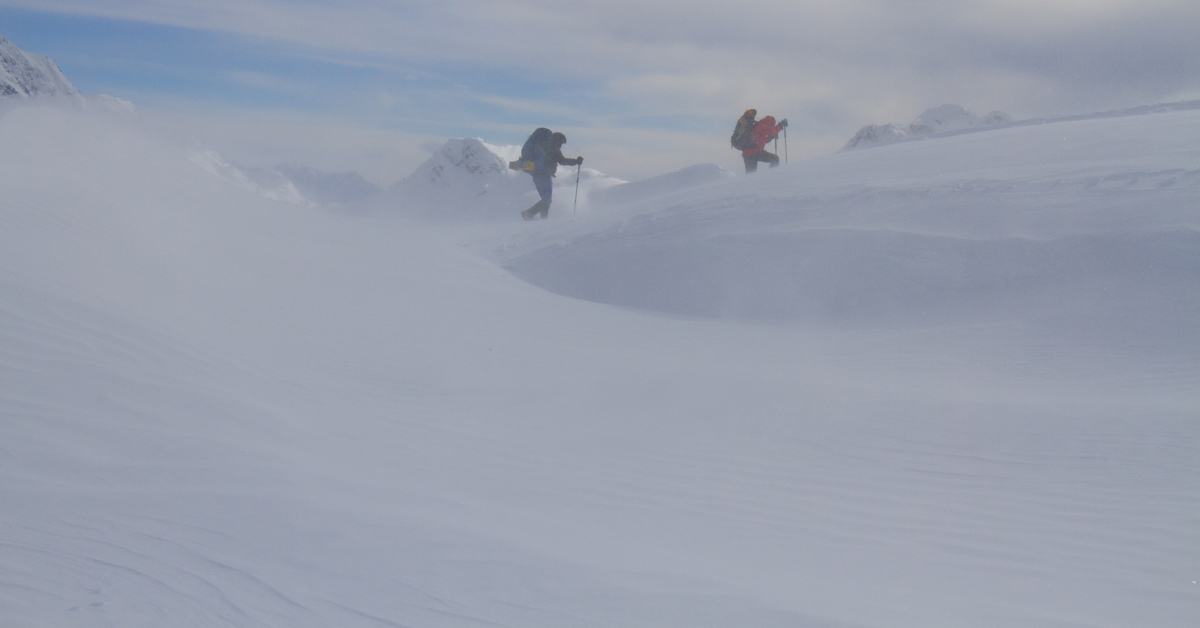From late October to March a typical cold-weather backpacking trip in the Cascade Mountains can involve preparation for snow camping in temperatures ranging from 10 to 35º F with 5–25 mph winds. The gear shown here is for such a trip.


From late October to March a typical cold-weather backpacking trip in the Cascade Mountains can involve preparation for snow camping in temperatures ranging from 10 to 35º F with 5–25 mph winds. The gear shown here is for such a trip.

Even if you are an experienced 3-season backpacker, realize that the winter adds unique risks, and what you know about common gear, such as stoves, hydration systems, sleeping bags, sleeping pads, and tents, will be different from what you need to know for winter conditions.

Whenever you hike into the backcountry you expose yourself to dangers and risks, such as avalanches caused by snow, mud, or rock slides. There are hunters, falling rocks, falling trees, tree wells, and the risk of slipping off ledges, falling through snow or ice, suffering from hypothermia, snow blindness, frostbite, severe sunburns, stove accidents, etc.
Know the risks when you decide to go winter backpacking. Be prepared and bring what you need. Basic tips for staying warm and knowing what gear to bring are explained below. This is not a comprehensive discussion of winter backpacking or backcountry safety, but it does contain important things that you MUST know before going.

Pacific Northwest winter weather is mild with temperatures usually between 20 to 35ºF for most backpacking trips between 3,000 and 7,000 feet of elevation. However, during the winter months, wind speeds increase significantly and trip planning needs to include clothing for wind protection to prevent discomfort, hypothermia, and even frostbite.